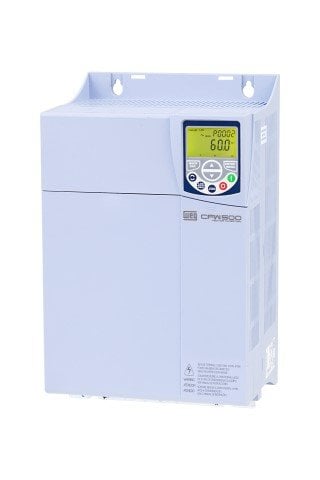www.magazine-industry-usa.com
07
'21
Written on Modified on
Are you getting the most out of your variable speed drive (VSD)?
It’s one thing opting for energy saving equipment, but it’s also important to make sure the equipment is properly installed and continually monitored so that you reap ongoing and maximum energy improvements.

Here, Marek Lukaszczyk, European and Middle East marketing manager at WEG UK, a leading global manufacturer of motors and drives, asks the important question: are you getting the most out of your VSDs?
From straightforward motor upgrades to installing soft starters — there’s an abundance of information out there concerning energy efficiency for plants. But, one of the most popular improvements, especially in industries such as wastewater, food and beverage, oil and gas, and HVAC, is opting for a VSD. VSDs can effectively control rotating equipment such as fans, compressors and pumps in industrial processes. In fact, according to the European Committee of Manufacturers of Electrical Machines and Power Electronics (CEMEP) a 20 per cent reduction in speed could lead to a 50 per cent reduction in energy.
Identifying energy saving potential
The first step is conducting an energy audit to establish where the most energy is being used in your plant. This will identify the areas with the most potential for energy and cost savings. Armed with this information, plant managers will be able to concentrate their resources on the priority areas. So, if you do decide to opt for a VSD, what should you look out for? And, if you already have VSDs installed, how can you ensure they’re operating effectively?
Equipment upgrades
Sometimes engineers inherit legacy equipment that may not be properly sized or suited to the new application. In these instances, upgrading your current VSD or replacing it entirely may result in greater energy saving potential, leading to long-term cost savings. From July 1, 2021, new Ecodesign Regulation (EU) 2019/1781 stipulates that new AC drives sold in Europe must meet IE2 efficiency class. The regulation will cover 3-phase standard drives from 0.12 kW ≤ Pn ≤ 1,000 kW.
In light of the new regulations, more attention is being given to optimising energy in components of electrical drive technology and it is predicted that the legislation will offer multiple benefits for Europe by 2030. WEG’s CFW500 models meet IE2 efficiency standards and are suitable for general engineering, conveying, turning, lifting, pumping and ventilation. However, depending on your application you may need a specialist VSD, such as WEG’s CFW501, designed specifically for HVAC applications, yet providing the same reliability, flexibility and efficient power control.
Proper installation and parameter settings
To deliver the maximum energy saving potential, VSDs must be commissioned and installed correctly. Following the manufacturer’s guidelines can make the difference between installations that run reliably for years and those with much shorter life cycles. This is where partnering with an expert like WEG, really pays off. If the VSD hasn’t been properly configured this can have a real impact on the performance of the system. To maximise the reliability of the installed VSDs, start by considering the application conditions and the speed the motor is required to run.
Parameters usually have a ‘default’ setting which will probably be adequate for most applications. However, these should be checked and adjusted for optimum operation. If help is required contact your local WEG representative.
Additional features
Many VSDs are packed with useful features that plant managers don’t know exist. For example, ensuring that the VSD’s energy optimiser is switched on, which then runs the motor at the lowest possible energy for a given speed and load condition, is an easy and effective fix. Similarly, additional sensors in the form of vibration and pressure sensors, can be an affordable add-on, enabling the drive to be used as a smart sensor for condition monitoring. By putting control functions in the drive, it cuts the need for a PLC, while saving energy and reducing downtime.
Another example is the Pump Genius in WEG VSDs for the water industry. This enables more effective use of motors based on production demands and fluid availability. Automatic broken pipe detection in the VSD can identify fluid leakage zones and adjusts motor performance accordingly. Additionally, dry pump detection means if fluid runs out, the motor is automatically deactivated and a dry pump alert is issued. In both cases, the motor reduces its energy consumption when less energy is required to handle available resources and warns the operator of a problem.
VSDs can even perform automatic clearing of the pump impeller, called deragging, which is carried out when required. This keeps the pump in optimal condition which has positive effects on the motor and energy efficiency.
Finally, it’s also important to continually monitor your systems to ensure your plant is achieving ongoing energy improvements. Composing a metering plan to measure and analyse energy usage over an extended period of time, is a good way to assess whether the chosen energy efficiency measures have been effective or whether further optimisations can be made. It's only through this continuous monitoring that plant engineers can begin to answer the question, am I getting the maximum potential out of my VSD?
www.weg.com

